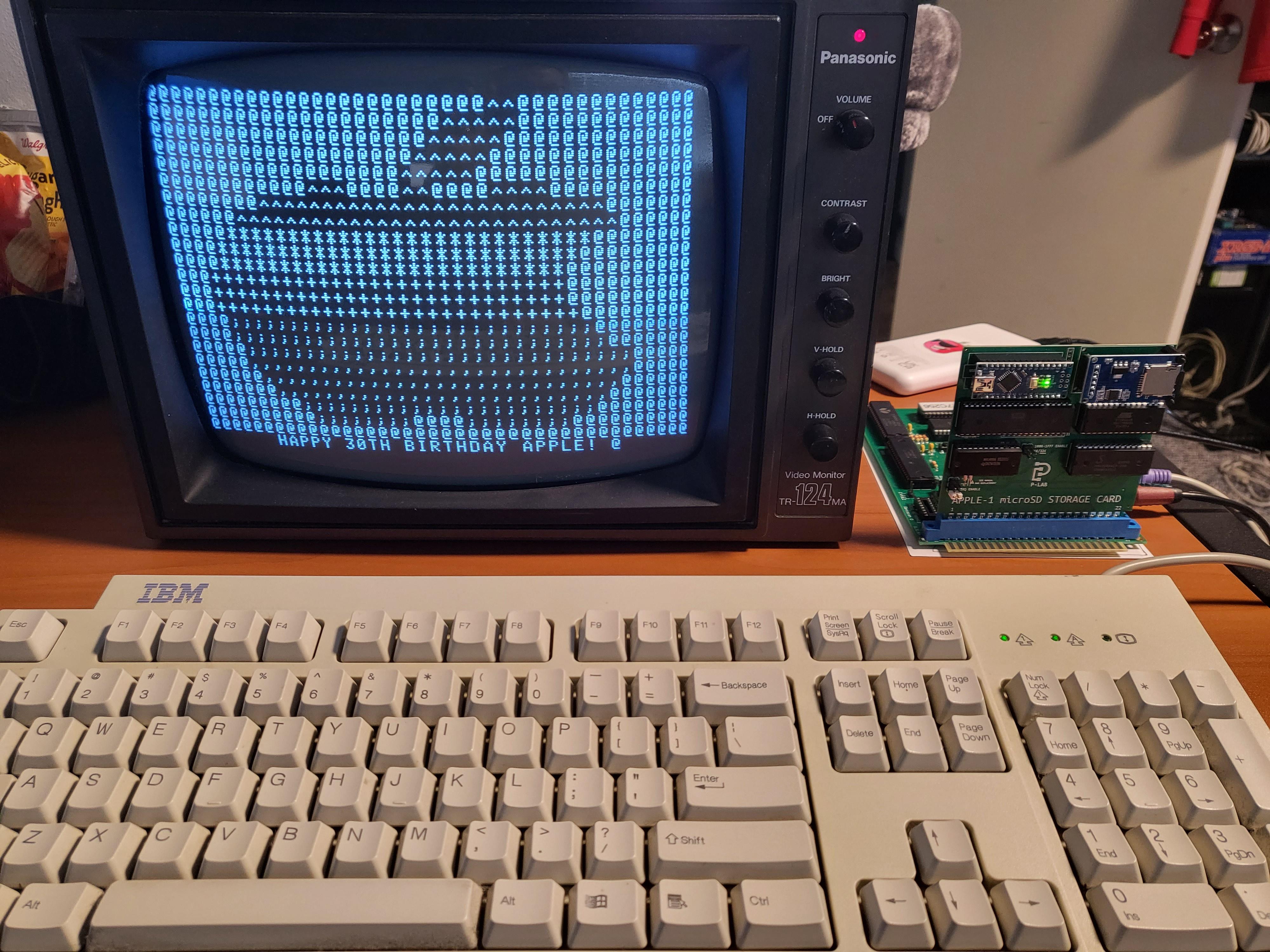Skate323k137
Well-known member
Recently, I built a Briel Replica 1 Plus, which is an Apple 1 clone made by Briel Computers and distributed through ReActive Micro. I built the kit pretty easily, it's a good project for anyone with a little through-hole assembly experience. When you first assemble it and boot it up, you can either interface via a USB/Serial (which also acts as the power input), or, you can power the board using USB and use a PS/2 keyboard and composite video monitor. The kit comes with documentation and some software both in integer BASIC and just in assembly/6502 machine code. The best way to enter a program, lacking a cassette interface (Which I do not have) was to use a serial application on your computer, and send the text files with a modest character and line delay. Loading even a small program still takes minutes.
The Briel comes with firmware for the CFFA1, but, the CFFA1 seems to be unobtanium and I'm not sure when the next run will actually be completed (not speaking ill of anyone, just the status of the project as far as I can tell). Enter the P-L4B card.
I saw this post on AppleFritter regarding the micro SD storage card: https://www.applefritter.com/content/sale-apple-1-microsd-storage-card
The creators of the device had not used it on this replica before, but they were pretty sure it would work with minimal modification to the board. It turns out they were absolutely correct. I had to jumper one wire from the main 5V trace to pin1 on the edge connector, set the jumpers right on the SD expansion card, and lift 2 pins of a DIP chip and then re-insert it. As far as Apple 1 goes, a pretty light lift.
The SD card has a lightweight functional OS, with actual backspace support (!). For example both 'dir' and 'ls' are recognized, and give slightly different outputs. dir is more verbose, ls is a bit uglier but prints less characters to screen so it can be quicker. LOAD and RUN both exist but generally RUN will take appropriate action based on the target file.
Programs of several K in size load in a matter of a few seconds, versus a few minutes of a serial terminal virtually punching them in. This card is quite impressive and I'm really excited to have helped test it on the Briel Replica 1.

Photo dump with more pictures:
The Briel comes with firmware for the CFFA1, but, the CFFA1 seems to be unobtanium and I'm not sure when the next run will actually be completed (not speaking ill of anyone, just the status of the project as far as I can tell). Enter the P-L4B card.
I saw this post on AppleFritter regarding the micro SD storage card: https://www.applefritter.com/content/sale-apple-1-microsd-storage-card
The creators of the device had not used it on this replica before, but they were pretty sure it would work with minimal modification to the board. It turns out they were absolutely correct. I had to jumper one wire from the main 5V trace to pin1 on the edge connector, set the jumpers right on the SD expansion card, and lift 2 pins of a DIP chip and then re-insert it. As far as Apple 1 goes, a pretty light lift.
The SD card has a lightweight functional OS, with actual backspace support (!). For example both 'dir' and 'ls' are recognized, and give slightly different outputs. dir is more verbose, ls is a bit uglier but prints less characters to screen so it can be quicker. LOAD and RUN both exist but generally RUN will take appropriate action based on the target file.
Programs of several K in size load in a matter of a few seconds, versus a few minutes of a serial terminal virtually punching them in. This card is quite impressive and I'm really excited to have helped test it on the Briel Replica 1.

Photo dump with more pictures:
